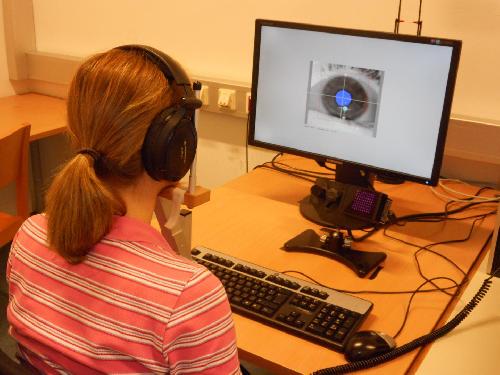When people are listening to music, their emotional reactions to the music are reflected in changes in their pupil size. Researchers from the University of Vienna and the University of Innsbruck, Austria, are the first to show that both the emotional content of the music and the listeners' personal involvement with music influence pupil dilation. A new paper demonstrates that pupil size measurement can be effectively used to probe listeners' reactions to music.
The pupil size reflexively adjusts to the amount of ambient light, contracting in bright daylight and dilating at night. However, pupil size is also modulated by thoughts, emotions, or mental effort. For instance, the pupil dilates in response to sexually explicit images, or when trying to solve a difficult mental computation.

Sounds may also evoke pupil dilations, depending on their emotional content. Highly arousing sounds, such as the voices of a couple quarreling, lead to larger pupil dilations than neutral sounds such as background office noise. However, although music also often induces strong emotions in listeners, pupil dilation in response to music has until recently not been investigated systematically.
Using short music excerpts from the Romantic era, renowned for its emotional pathos, a team of researchers led by Bruno Gingras (University of Innsbruck) showed that listeners' pupils indeed dilated in response to emotional music. Excerpts that were judged to be more arousing were associated with larger pupil dilations than calm or relaxing excerpts. Bruno Gingras further explains that "larger dilations were observed for listeners who reported that music plays an important role in their life." Overall, the results suggest that emotional responses to music are reflected in pupil size, with both the emotional content of the music and listeners' personal involvement with music influencing pupil dilation.
To arrive at this conclusion, Gingras, working at the time in the laboratory of Tecumseh Fitch in collaboration with Manuela Marin and Estela Puig-Waldmüller (all at the University of Vienna), selected 80 piano trio excerpts and asked 30 participants to rate these excerpts for their emotional content. Another group of 30 participants with no knowledge of the purpose of the experiment listened to these excerpts while their pupil size was measured using an eye tracker, before filling a short questionnaire which included questions about their relationship to music.
According to Manuela Marin, this study suggests that "a complex interplay between musical features and listeners' individual characteristics influences pupil responses to music, and presumably emotional responses as well." Further research, using a greater variety of musical genres as well as a more sophisticated analysis of listeners' engagement with music, is needed to explore this phenomenon more fully. Nevertheless, adds Bruno Gingras, "our research clearly demonstrates that pupil size measurement is a promising tool to examine emotional reactions to music. Moreover, because pupil responses cannot be voluntarily controlled, they provide a direct access to listeners' preconscious processes in response to music."




Comments